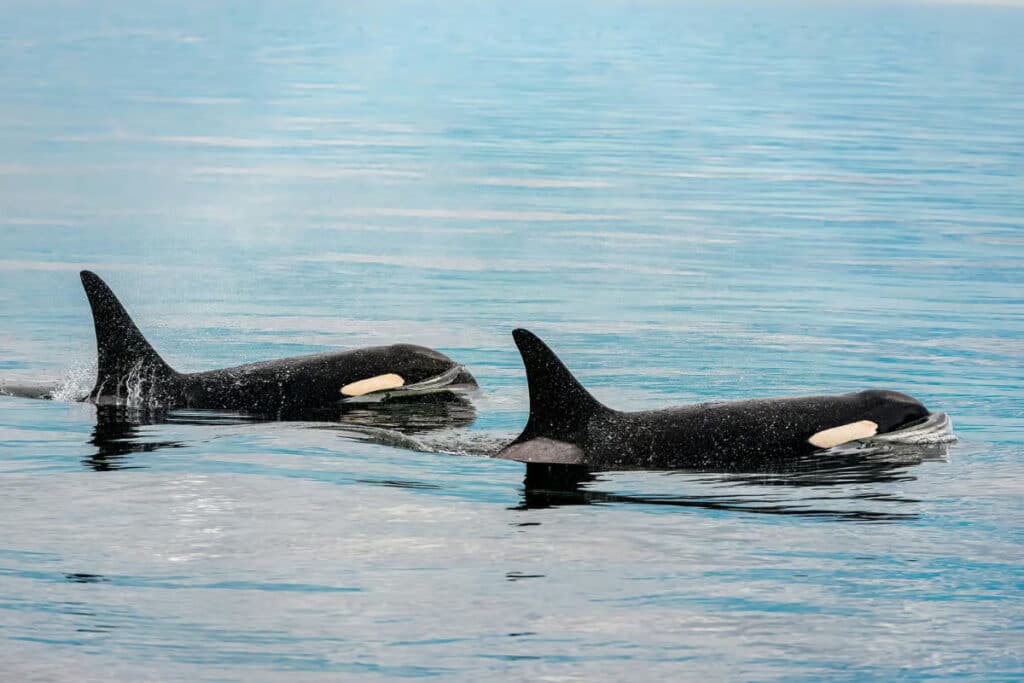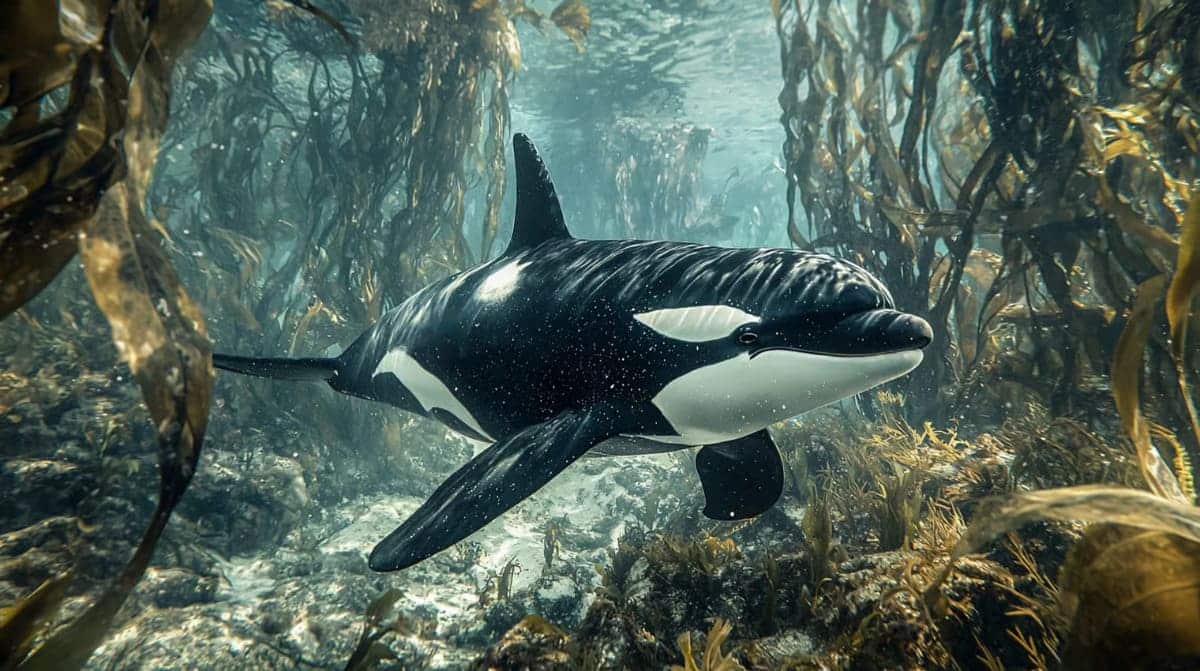Orcas are showing a rare example of intelligence and culture: Southern Resident orcas, now facing extinction, have been spotted shaping seaweed into tools to massage one another. This unique behavior reveals a social, caring, and calming side of these marine mammals, showing a marine society that urgently needs protection.
Seaweed as a Grooming Tool
Orcas have been observed using giant kelp stalks as tools to massage one another, marking the first recorded instance of tool-making by marine mammals. While cetaceans like dolphins and orcas have been seen using tools for hunting, this behavior is different. These orcas are picking and shaping kelp stalks to roll over their bodies, a practice that takes place over an extended period.
Scientists from the Center for Whale Research (CWR) and the University of Exeter observed this behavior across all ages of a population in the Salish Sea. The precision of drone images has enabled these observations on a population that has been studied for over 50 years.

This practice could play a role in stress relief, social relationships, or skin health in these cetaceans, the researchers suggest. © Stephen Walker, Unsplash
A Social and Health Function
These orcas don’t simply find seaweed to use; they modify it, shaping it into something new, says Michael Weiss, CWR’s research director. This behavior could serve multiple purposes, including reducing stress, enhancing social bonds, and maintaining skin health. The kelp’s firm yet flexible nature makes it ideal for grooming, with its slippery outer surface acting like a hose.
Social Needs, Not Just Health
While animals generally use tools for food, this unique use of seaweed by orcas may point to something more. Darren Croft from the University of Exeter suggests it could be about social challenges, with the orcas using this tool to foster meaningful social interactions—something crucial to their well-being.
A Cultural Behavior in Danger
This behavior may be a cultural trait unique to the Southern Resident orca population, which now has only 73 individuals remaining. Threatened by the loss of prey, pollution, and the disappearance of kelp forests due to climate change, this population is at risk.
The need to protect this unique society and its behaviors has never been more urgent, as their future remains uncertain.

